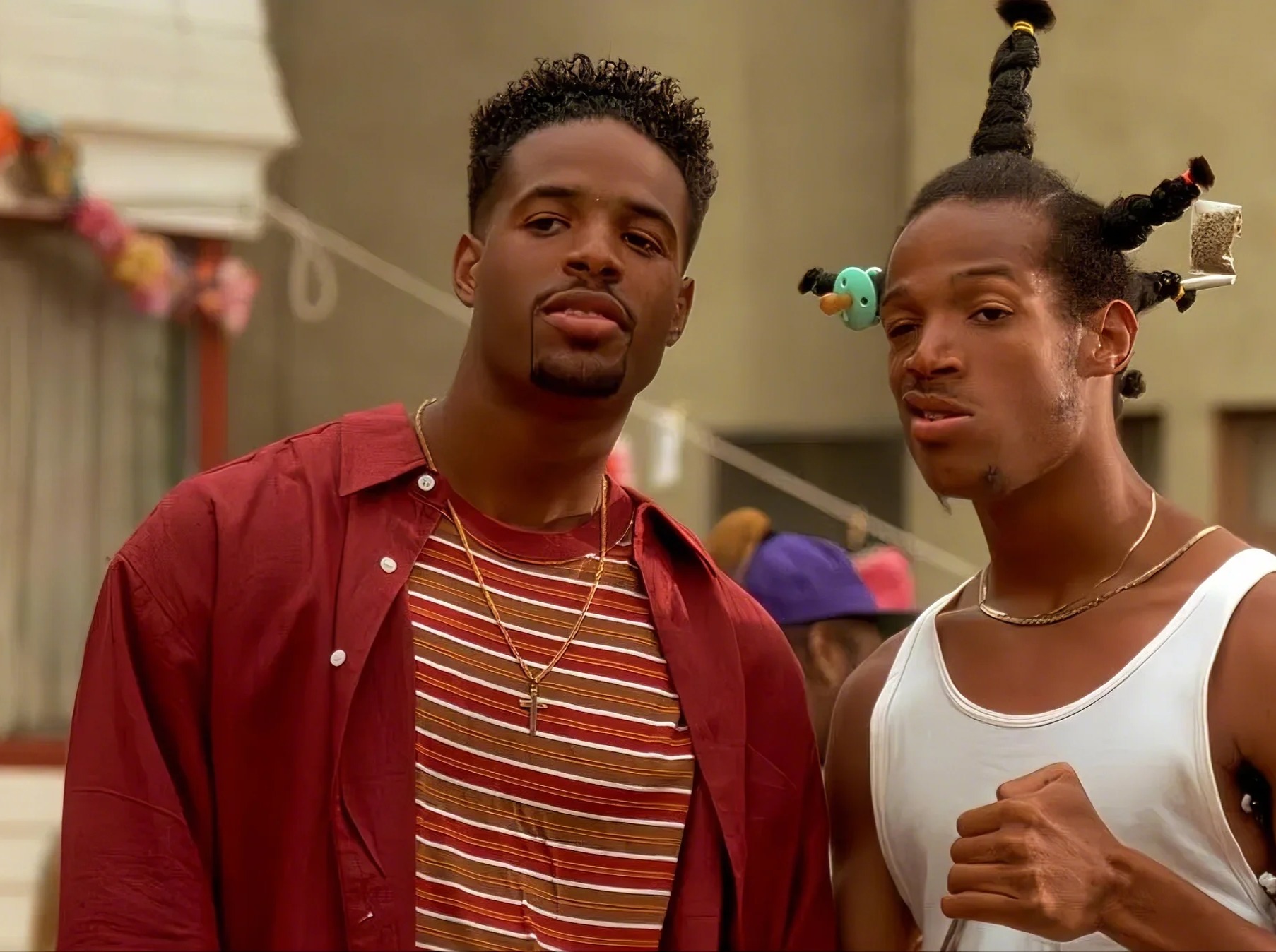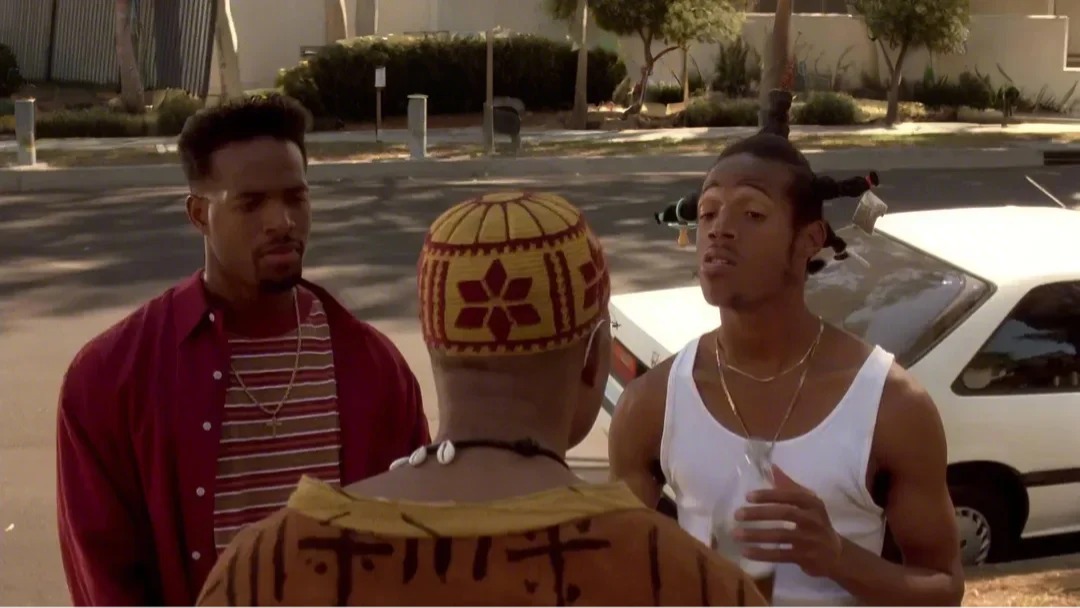“Don’t Be a Menace to South Central While Drinking Your Juice in the Hood” – A Bold Satire of Urban Cinema
Introduction In 1996, the Wayans family introduced audiences to a daring, hilarious, and unapologetically irreverent film, Don’t Be a Menace to South Central While Drinking Your Juice in the Hood. Directed by Paris Barclay and written by Shawn Wayans, Marlon Wayans, and Phil Beauman, this parody of 1990s urban dramas blends absurd humor with sharp social commentary, creating a unique viewing experience.

Plot Overview The film follows Ashtray (Shawn Wayans), a young man returning to South Central Los Angeles to live with his father, who is hilariously younger than him. Ashtray reconnects with his delinquent cousin Loc Dog (Marlon Wayans), whose over-the-top antics and arsenal of weapons provide much of the film’s comedic punch. Together, they navigate the absurdities of urban life, encountering exaggerated stereotypes and situations that parody films like Boyz n the Hood, Menace II Society, and Juice.
Themes and Humor Don’t Be a Menace is a clever critique of the tropes and clichés often seen in “hood films.” It tackles serious subjects like gang violence, systemic racism, and poverty with a comedic lens, using absurdity and satire to highlight the issues without diminishing their importance. The humor is a mix of slapstick, wordplay, and over-the-top visual gags, appealing to fans of the Wayans’ signature style.

Impact and Legacy Upon release, the film received mixed reviews, with some critics praising its bold humor and others criticizing it for being too crude. Despite this, it has become a cult classic, appreciated for its fearless approach to comedy and its commentary on urban culture. The Wayans’ ability to push boundaries while keeping audiences laughing solidified their reputation as pioneers of parody in Hollywood.
Conclusion Don’t Be a Menace to South Central While Drinking Your Juice in the Hood is more than just a comedy; it’s a cultural artifact that encapsulates the humor and struggles of the 1990s. Its blend of satire and slapstick ensures its place in the pantheon of great parodies, making it a must-watch for fans of urban cinema and comedy alike.
